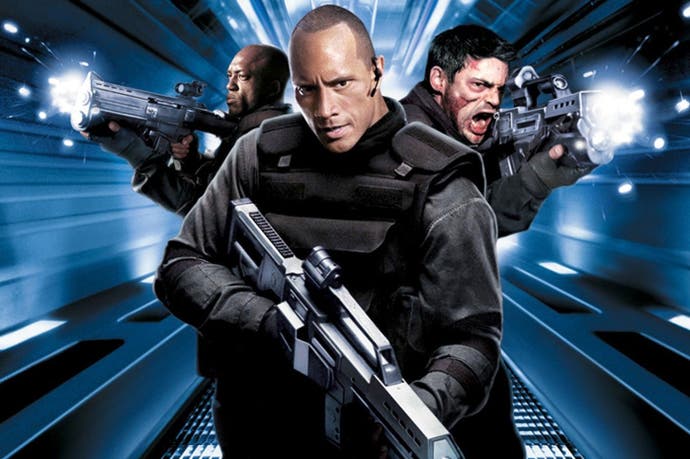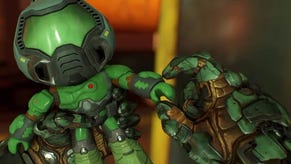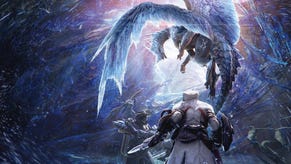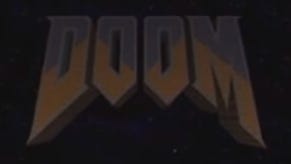The Doom movie missed the point - but so did most rival games
The Rock and a hard place.
It's fun to get swept along by new-game fever - especially when the game is as pleasant a surprise as id Software's robust Doom reboot - but the tide of enthusiasm can carry you to some regrettable places. Don't, as I did, make the mistake of thinking that this would be a perfect moment to reappraise the 2005 Doom movie, which is currently available on Netflix in the UK and across Europe. There is no reappraising to be done here. It's a bad film, probably worse than you remember. Just another rubbish video game movie - except it's not, because of one historically remarkable shot, and because Doom's fearsome magic has eluded other game makers as well as filmmakers. For years, it even eluded id themselves.

Before we lay into it, let's acknowledge the impossibility of the task that was set the filmmakers, director Andrzej Bartkowiak and screenwriters David Callaham and Wesley Strick. Even the dumbest action film requires, as basic underpinnings, things that Doom simply doesn't have: more than one character, dialogue, a plot, any kind of motivation or internal logic whatsoever for the action. Although a good Doom movie isn't impossible to imagine, it is a fool's errand from the offset, and it is always going to have to invent most of itself from first principles.
Let's also pause to note that most of this movie's failings have nothing to do with it being a misguided video game adaptation, and are simply those of any bad film. The script comprises nothing but exposition and cliché and can't boast a single laugh. (Strick, who wrote such lurid entertainments as Arachnophobia and Martin Scorsese's Cape Fear remake in the early 90s, had clearly lost his gift for pulp in the intervening years.) A low budget is compounded by uninspired production design to give the film a bland, anonymous look and a total lack of visual excitement; the action switches between Earth and Mars, but if you had the sound muted, you'd never know. For a film directed by a former cinematographer, it is also bafflingly poorly lit. Doom has one great asset, its star Dwayne Johnson, who at the time was still happy for his nom de wrestle The Rock to appear in the credits, but he's wasted. In 2005, his winning screen persona wasn't fully formed yet and the producers had no inkling of how to draw it out, casting him as a sober military meathead instead of the iron-pumped puppydog we now all know and love.
The filmmakers did at least know that due homage must be paid to their phenomenal inspiration. In fact, Doom goes to greater lengths to venerate video games than most other movie adaptations have done. A mad scientist at the Mars research facility that The Rock's team has been sent to secure is called Doctor Carmack. The Rock - I won't pretend to remember his character's name, I think it was "Sarge" - also discovers the legendary BFG in the course of the action. A computer screen calls it a Bio Fusion Gun, but Dwayne knows its true name: "big, fucking, gun," he breathes as the camera approaches and circles the weapon adoringly. It's floating in a stasis field so that the shot looks exactly like a weapon-select screen - a cute touch.
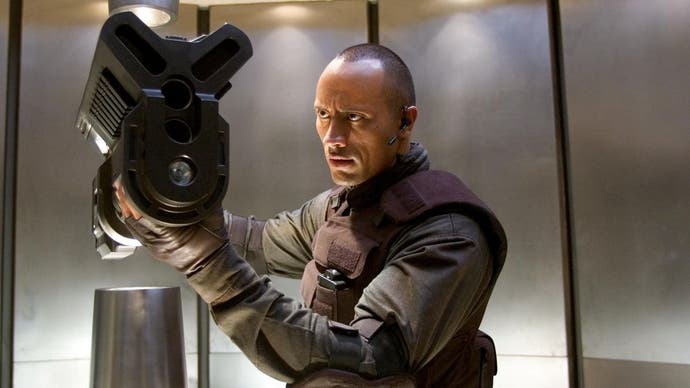
And then we have the only interesting stretch of Doom's 105 minutes of footage: the five-minute first-person action scene. The interest is already more historical than anything, since what Bartkowiak achieved with great difficulty in 2005 has already been outdone by what the makers of Hardcore Henry can shoot with a GoPro. But, though gimmicky, this unbroken effects shot was a technical and stylistic first, a surprisingly accurate and powerful rendition of the video game aesthetic on the big screen. Its influence goes beyond stunt productions like Hardcore Henry; the technique is steadily making its way into the film lexicon via straight dramas like the Jake Gyllenhaal-starring cop procedural End of Watch. The sequence also contains the film's single great image: in a memorably nihilistic sight gag, the camera-gun whips around to plant yet another headshot on a fast-moving foe, but when the victim comes into focus it turns out that Karl Urban - ostensibly a marine called Reaper, but at this moment playing the audience, playing him - has drilled a neat hole in the forehead of his own reflection. You want senseless, self-destructive violence? You got it.
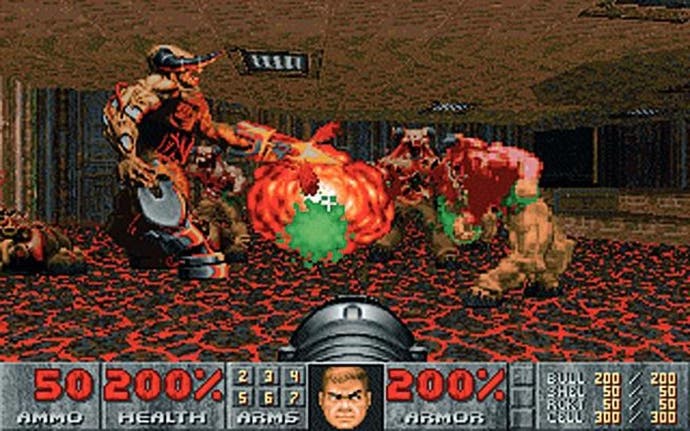
Doom knows it's a video game film. More than that, it knows it's a first-person shooter film. But it doesn't seem to know that it's a Doom film. It spends most of its time being a low-rent Aliens, with paranoid marines being picked off in darkened corridors by half-glimpsed beasts. It's hung up on bromantic squad machismo and the terror of confined spaces, just like so many sci-fi action films of the last 30 years and so many games, too. When this film was released, id's misconceived Doom 3, with its survival horror inflections, was a year old, and Infinity Ward's Call of Duty 4: Modern Warfare was a year in the future. It resembles both of them far more than it does the original Doom.
That's because Doom isn't a military game, and it isn't really a horror game either. Of course it is about guns, and it is about shooting monsters. But it isn't only about guns, and the monsters aren't just any monsters. The Doom movie missed this, as did many video game imitators.
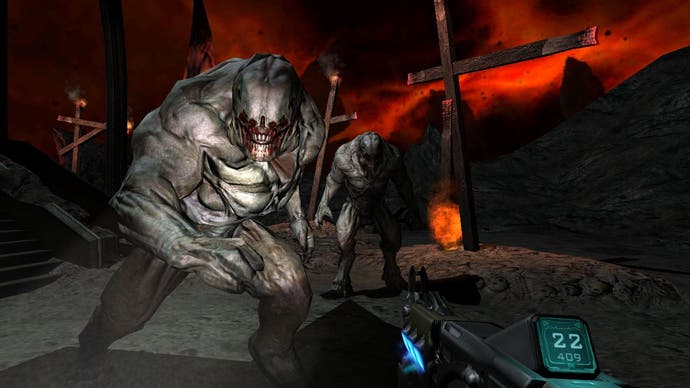
Doom has as much to do with fantasy as it does with sci-fi or horror; it is a heavy metal album cover come to vile life. It is grotesque and extreme and weird. The film's greatest error is to excise Hell from its story world completely. In its version of Doom, the monsters are not demons, but the product of some genetic experimentation gone wrong. Instead of representing an implacable force of pure, occult malevolence, they serve a pedestrian moral about meddling with nature. The scientific mission to Mars has revealed an ancient civilisation that did for itself out of hubris, instead of a portal to a supernatural realm that denies all science. The film rationalises; the game glories in finding no rationality at all.
I was reminded of this comment from Edwin's first impressions of the new Doom: "Perhaps the most unjust thing you can say of the original Doom is that it's a shooter. Sure, there are rocket launchers and they make Hell Barons go splat pretty good, but the guns aren't really the point. The core components of the 1993 game's appeal are its maps, or rather, dungeons - shifting Stygian warrens of flesh and bulkhead, in which no chamber is without its fair share of false walls, trick floors, mysterious switches, teleportation pads and tantalisingly out-of-reach power-ups." The film doesn't capture that, and so few of the shooters that have come in Doom's wake do, either.
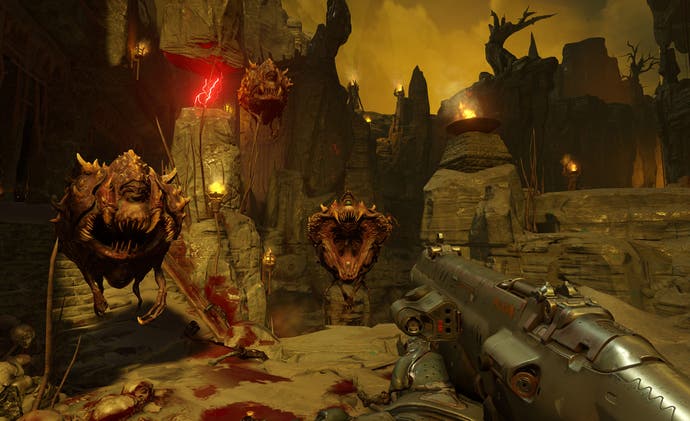
I also remembered this brilliant Smug Film blog on the aesthetic of Doom and Doom 2, which compares a plain steel door from the film with doors in the game emblazoned with horned skulls, flattened screaming faces and Geiger-esque organic circuitry. As the author, John D'Amico, puts it: "Doom is about a heavily-armed man fighting demons with a penchant for bloody sacrifice, symmetry, and inscrutable biotechnica." Doom is an intentionally ugly and unsettling game of contrasts: Guignol horror, angular modernism and a clashing colour palette of startling neons. In 20 years of sci-fi horror films and games, there's been nothing that looks like it.
Doom, the film, doesn't. Doom 3 didn't, not really. This new Doom? It's halfway there. As technically impressive as id's new game is, I feel it's still struggling to find a modern interpretation of the early games' perfectly hideous look. It's just not prepared to be ugly or strange enough. But unlike all the shadows that have chased Doom through cinema and games across the last 20 years, this Doom knows to build mazes rather than corridors, and it knows it needs to take a full-throated descent into Hell at full tilt. Even The Rock couldn't cook that - but at long last, id has.
